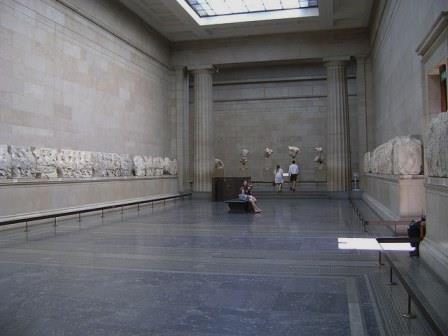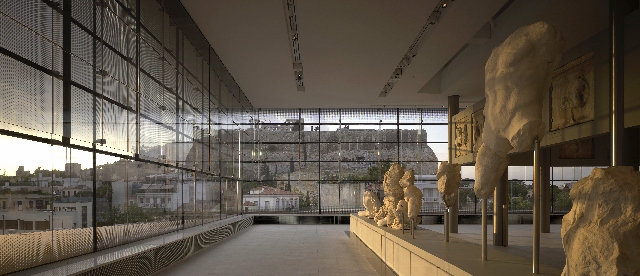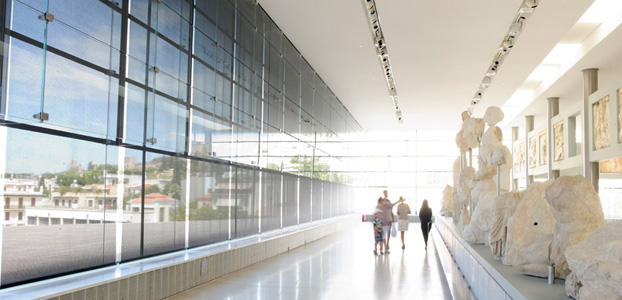THE PARTHENON MARBLES: RESPONSE TO NEW STATEMENT OF BM TRUSTEES
The trustees of the British Museum have published a new statement of their position on the Parthenon marbles. It consists mainly of a puzzling list of “common misconceptions”:
“ALL OF THE SCULPTURES OF THE PARTHENON ARE IN THE BRITISH MUSEUM”
This is puzzling given that the whole argument is about the reunification of the sculptures in London and Athens. Also puzzling is the statement that 30% of those that remain are in London and 30% in Athens. These figures of course refer to those which survive, divided approximately 50/50% between London and Athens.

“THE SCULPTURES IN THE BRITISH MUSEUM WERE STOLEN”
No one doubts that the British government bought them in good faith from Lord Elgin and entrusted them to the Museum. No one questions that he had certain licence from the Ottoman authorities. The questions hang on whether he exceeded that licence. There is much evidence that he exceeded that licence. For understandable reasons the Greek government will not accept the legality of his actions. However for a complex of legal reasons including the passage of time, the loss of much evidence, the demise of the Ottoman Empire and thus of its legal system, and much else, it is highly unlikely that the legality or otherwise of Lord Elgin’s acquisition of his collection could be conclusively demonstrated in a court of law. A Select Committee of Parliament of course is not a court of law. Anyway, the case for reunification rests mainly on cultural and ethical arguments.
“THE GREEK GOVERNMENT HAS ASKED FOR A LOAN OF THE SCULPTURES WHICH HAS BEEN TURNED DOWN BY THE BRITISH MUSEUM”
This also is puzzling. Given that the Greek Government (as quoted) “has never acknowledged the legal title of the British Museum to the Parthenon Marbles”, this situation could not arise. Indeed it enables the British Museum to go through the charade of offering a loan in full knowledge that it will be refused, because “loan” implies “ownership”.
“THE BRITISH MUSEUM FEELS THAT THE SCULPTURES SHOULD REMAIN IN LONDON BECAUSE THERE IS NOWHERE TO HOUSE THEM IN GREECE AND THE GREEK AUTHORITIES CANNOT LOOK AFTER THEM”
They don’t now, but they used to, until both claims were demonstrated to be unsustainable.
THE DIVISION OF THE PARTHENON MARBLES IS A UNIQUE CASE. THE SCULPTURES CAN ONLY BE APPRECIATED AS A COMPLETE SET.
We accept that many cultural objects....from one “location” have been divided and dispersed. The trustees cite anonymous altar pieces. However they fail to cite anything remotely comparable with the Parthenon, a fixed monument acknowledged by UNESCO itself to be the most important UNESCO World Heritage Site in Europe. We continue to argue that its case is incomparable and unique. We accept that it is not possible to bring together 100% of the original sculptures. However since when has is not been acceptable to recreate works of art to less than 100% of their original form? The British Museum exhibits many piece displayed in this state, not least their own collection of Parthenon sculptures.

THE SCULPTURES COULD NOT BE REUNITED ON THE PARTHENON
We do not advocate this. We accept that for reasons of conservation it is no longer possible. However it is common practice now for sites of fixed monuments to have museum annexes which display perishable parts removed for protection. The Parthenon is arguably better served in this way than any other monument. The whole area of the Acropolis and its environs is a pedestrianised archaeological park. It is possible to visit the Parthenon in its full context and in the same visit go the Acropolis Museum to view the sculptures in full context and correct configuration, in a glass walled roof gallery in full simultaneous view of the Parthenon itself.

THE MATTER COULD BE SOLVED BY THE BRITISH MUSEUM SETTING UP AN OUTPOST IN ATHENS
This is not a misconception. We firmly believe it is possible. It is rejected on the ground that the Parthenon sculptures “need” to continue to be seen within the context of the world collection of the British Museum in order to deepen our understanding of their significance within world history. Elsewhere in the statement this is described as “vital”. Not so. Of course the role they play is important. How could such magnificent works of art not be important to any collection? But in the end their role is contingent on the fact that, by an accident of history, viz the divorce of Lord Elgin and his consequent bankruptcy, they have ended up in the British Museum. If they weren’t there the British Museum surely has adequate alternate exemplars in its collection to make the same point in their world narrative. And if not, the Greek Government has a standing offer of a rolling programme of alternative exemplars to do the job.
In the end, we can accept that these sculptures play an important but not an indispensable role in the British Museum’s world narrative. However the price of this is the compromise of the integrity of a pre-eminent work of art (pace now sadly incomplete), the monument to which they belong, and the museum to whose narrative they ARE INDISPENSABLE as long as they exist.
Surely given the possibilities of modern technology, the establishment of an outpost in Athens is not only possible but a small price to escape the status quo, in which public opinion increasingly sees the stance of the British Museum as a vanity project and the Parthenon marbles as trophies in it.





Comments powered by CComment